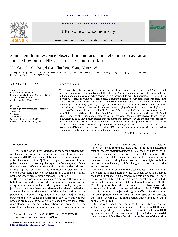摘要
The aim of this study is to investigate the mechanism of the erosion process induced by 1.2 MHz pulsed high-intensity focused ultrasound (pulsed HIFU). By using Sonochemiluminescence (SCL) photograph, the initiation and maintenance of active cavitation were observed. In order to understand the role of both inertial cavitation and stable cavitation, a passive cavitation detection (PCD) transducer was used. Since the exposure variables of HIFU are important in the controlled ultrasound tissue erosion, the influence of pulse length (PL) and duty cycle (DC, T-on:T-off) has been examined. The results of tissue hole, SCL observation and acoustic detection revealed that the erosion was highly efficient for shorter PL For higher DCs, the area of SCL increased with increasing PL For lower DCs, the area of SCL increased with increasing PL from 10 to 20 mu s and then kept constant. For all PLs, the intensity of SCL decreased with lower DC. For all DCs, the intensity of SCL per unit area (the ratio of SCL intensity to SCL area) also decreased with increasing PL from 10 to 80 mu s, which suggested that the higher the intensity of SCL is, the higher the efficiency of tissue erosion is. At DC of 1:10, the position of the maximum pixel in SCL pictures was distant from the tissue fluid interface with the increasing PL because of shielding effect. By the comparison of inertial cavitation dose (ICD) and the stable cavitation dose (SCD), the mechanisms associated with inertial cavitation are very likely to be the key factor of the erosion process.
- 出版日期2013-11
- 单位西安交通大学
